manufactured in the Sandwich Islands
Kealekekua Bay, 31 March 1822
Barkcloth
With printed pattern, and number three label at the top.
His Majesty’s Ship Mermaid dropped anchor alongside eleven American whaling ships, each with a capacity of 300 to 350 tons, in the bay where Captain James Cook had been killed 43 years earlier.1 By comparison, she was tiny – a 61 ton copper sheathed cutter built in Howrah opposite Calcutta on the Hooghly River, where Henry Townley acquired his models of ‘Hindoo Deities’.
Purchased by the British navy at Port Jackson in 1817, the Mermaid was put to work surveying the Australian coastline – an image of the ship seems to have been scratched onto rocks at Enderby Island in Western Australia,2 before delivering a first cargo of convicts to the new penal settlement at Port Macquarie.3 She was then given a new mission – to deliver another ship, the Prince Regent, to the Sandwich Islands – as Hawai’i was widely known to English speakers at the time.
The Prince Regent was a gift, presented in recognition of Hawai’ian assistance during the war of 1812 between the United Kingdom of Great Britain and Ireland and the United States of America. Built at Port Jackson, she was a 70 ton copper bottomed schooner equipped with six guns. After 1811, during the mental illness of King George III, Britain was ruled by his son as Prince Regent, hence the vessel’s name. In January 1820 George III passed away, eight months after Kamehameha I, the King of Hawai’i.
Like his near contemporaries, Pomare in Tahiti and Napoleon in Europe, Kamehameha pursued a strategy of military expansion. During his reign he established a united kingdom across the Hawai’ian Islands using European weapons, with strategic input from his British advisors, John Young and Isaac Davies. George III’s reign had seen the political union of the kingdoms of Great Britain and Ireland in 1801, but also the loss of the colonies that became the United States of America.
His Majesty's Cutter Mermaid
Ink Sketch 85 [1817] in Phillip Parler King album of drawings and engravings, 1802-1902.
State Library of New South Wales, PXC767
It is perhaps unsurprising that as ruler of an island kingdom, Kamehameha preferred to pursue an alliance with the British, rather than the Republican and continental USA. Ultimately, the Prince Regent, as a gift, would link the succeeding generation of island kings, George IV, previously the Prince Regent, and Kamehameha II, also known as Liholiho. When the twenty-one year old assumed the throne, however, he had been greeted by Queen Ka’ahumanu, wearing his father’s royal robe. She declared she would rule alongside him as Kuhina Nui or Queen Regent.
In November 1819, at a feast to commemorate Kamehameha I, Liholiho sat down and ate with the royal women, inaugurating the end of the existing kapu (taboo) system – a period now referred to in Hawai’ian as the ‘Ai Noa (free eating). It seems likely that this action was at least partly inspired by the actions of Pomare II in Tahiti during 1815, since both Liholiho and Ka’ahumanu were aware of what had happened there.
At the end of March 1822, however, it was not the Prince Regent that the Mermaid brought to Kealakekua Bay, having lost sight of her charge on their way across the Pacific, but rather a party of twelve missionaries. En route to Hawai’i from Australia, the two vessels had stopped at Huahine, near Tahiti, where Captain Kent of the Mermaid had been persuaded to make space for them on board.
Fare Harbour, Island of Huahine
Drawn by John Dennis from a sketch by D. Tyerman
Plate II in Voyage and Travels by the Rev. Daniel Tyerman and George Bennet, Esq, Volume I, 1831.
Having established the missionary printing press at Moorea in June 1817, William Ellis oversaw the printing of 7000 Tahitian school books during the first five months of its operation, working seven or eight hours a day. Writing home on 4 December 1817, he noted:
Canoes are frequently arriving from various parts, with persons whose business is to enquire when the books will be ready: and an increasing desire to become acquainted with the word of God, powerfully pervades the minds of the people.4
A 24 page translation of the Gospel of Luke was soon prepared for printing, with paper supplied by the British and Foreign Bible Society.
In mid-November 1817, six additional British missionaries arrived at Tahiti, including Lancelot Threlkeld, who had left England with Ellis but was held up in Rio de Janeiro due to the illness of his family. Also among the new recruits was John Williams, who would become a celebrated missionary martyr decades later.
In May 1818, the time that LMS supporters gathered annually for missionary week in London, Pomare II established a Tahitian Auxiliary Missionary Society to collect donations of coconut oil, pigs, arrowroot and cotton to enable the expansion of missionary work beyond Tahiti.
In early July of that year, with the Gospel of Luke printed in Tahitian and bound copies distributed among the missionaries, Ellis loaded the printing press onto the Haweis, a locally built missionary ship, and sailed for the island of Huahine. He was initially accompanied by Williams and Threlkeld, but in September the pair relocated to the neighbouring island of Raiatea, a Polynesian ceremonial centre widely recognised across the Pacific.
By 1822, the Church at Huahine was well established and intent on sending its own missionaries to resume the aborted mission to the Marquesas Islands, a thousand miles to the north-east. A religious meeting of around 1200 people in the island’s large chapel selected two volunteers. Auna, a nobleman and former priest of Raiatea, now a deacon of the Huahine church, volunteered to take the ‘good word of God’ – parau maitai nate atua – together with his wife, who the congregation agreed would teach the women ‘to make their own dresses, plat straw bonnets’ in order ‘to clothe themselves decently’.5 The assembly then called on Mattatore, another nobleman, to accompany them, together with his wife.
Captain Kent of the Mermaid agreed to provide the volunteers with free passage, either on his way to Hawai’i or on the return voyage. Auna, Mattatore and their wives were accompanied by William Ellis, as well as Daniel Tyerman and George Bennet, who were visiting Huahine at the time, together with their ‘personal servants’, engaged at Huahine (including one named Purahah).6
Tyerman, a minister from the Isle of Wight, and Bennet, a lay supporter of missions from Sheffield in Yorkshire, were known as ‘the Deputation’ – sent by their fellow Directors of the London Missionary Society on a journey of inspection around the globe:
to make themselves thoroughly acquainted with the state of the missions, and of the islands; and to suggest, and, if possible, carry into effect, such plans as shall appear to be requisite for the furtherance of the gospel, and for introducing among the natives the occupations and habits of civilised life.7
The Directors were apparently more concerned with ‘the occupations and habits of civilised life’ than many of the missionaries. A few years earlier they had sent John Gyles with equipment for processing sugar cane to Tahiti – he had previously been an overseer in Jamaica. According to a missionary account compiled at Tahiti:
Both Mr G and the Directors of the Missionary Society appeared to have wrong views on the subject, They thought as the people had embraced Christianity, they would at once see the propriety of productive plans of industry that might be proposed to them and at once adopt all that might be proposed advantageous from the circumstances of climate &c such as the Culture of the sugar Cane, Cotton, Coffee &c and Mr G having been in the West Indies, and witnessing the cheapness of labour by means of negroes thought the natives of these islands might be induced to labour in the same way. But he soon found he had free and independent people to deal with, and the more of command and authority he used toward them, the less they were disposed to obey.8
In August 1819, after an unsuccessful and ultimately unproductive year, Gyles left with his family for Australia. Undeterred, in May 1821, the Directors despatched two further missionary artisans and their families to Tahiti along with Tyerman, Bennet and another missionary recruit with all the equipment for spinning and weaving cotton in a British whaling ship. As well as a crew of 35 and a surgeon, the passengers also included a 25 year old Tahitian who had been baptised with the name Robert.9
Arriving at Matavai Bay in late September 1821, the Deputation began an engagement with the Society’s mission stations that would last until Bennet finally returned to Britain in June 1829. The visit to Hawai’i was unplanned, but provided an opportunity to meet the missionaries who had arrived there in March 1820, sent by the USA’s counterpart to the LMS, the American Board of Commissioners for Foreign Missions, established in 1810.
Unlike the British first edition of the Journal of Voyages and Travels by the Rev. Daniel Tyerman and George Bennet, Esq, published in two volumes 1831, an American version, published in Boston the following year, ends the first of three volumes with their arrival at Kealekekua Bay on 31 March 1822. Revised by an American Editor, this choice seems deliberate – beginning the second volume with the deputation’s time in Hawai’i – of greatest interest to a New England readership.10
Rev. Daniel Tyerman
Engraved by Penner Sears & Co from an original miniature
Frontispiece in Voyage and Travels by the Rev. Daniel Tyerman and George Bennet, Esq, Volume I, 1831.
British Library Digital Store 10024.f.3.
George Bennet Esq.
Engraved by Penner Sears & Co from a painting by J. Jackson, R.A.
Frontispiece in Voyage and Travels by the Rev. Daniel Tyerman and George Bennet, Esq, Volume II, 1831.
British Library Digital Store 10024.f.3.
Towaihae [Kawaihae] Bay, in the island of Hawaii, on the North West
Drawn by John Dennis from a sketch by D. Tyerman. Engraved by Fenner Sears & Co.
The image appears to show the mermaid at anchor, about to be visited by a canoe.
Plate IV in Voyage and Travels by the Rev. Daniel Tyerman and George Bennet, Esq, Volume I, 1831.
After leaving Huahine, north-easterly winds saw the Mermaid bypass the Marquesas. Her crew and passengers were no less cosmopolitan than the fictional whaling ship Pequod, immortalised in Herman Melville’s 1851 novel Moby Dick. When an orphaned Australian aboriginal boy fell overboard, he was saved by Tyerman and Bennet’s Tahitian attendants, who dived into the sea, a rope tied around their waists – a feat that was performed by Queequeg, the Polynesian harpooner of Melville’s whaling tale.11
The first Hawai’ian to meet the party at Kawaihae Bay was John Adams Kuakini, Royal Governor of Hawai’i, the largest island in the archipelago, and younger brother of the Queen Regent Ka’ahumanu. Kuakini, who had learned English from Americans visitors and adopted the name of the second American President was dressed in a jacket and trousers.
The following day, the Mermaid was visited by a number of more ordinary Hawai’ians in canoes, described by Tyerman and Bennet as ‘very scantily attired, and very slovenly in their manners’.12 When the deputation went ashore the following day, they encountered women wearing ’no covering except a slight cloth about their loins’ but some were ‘superbly tattooed’.13
Later, they met a high status woman with ‘remarkably modest’ demeanour, wearing ‘a scarlet woollen under-dress of European manufacture, and an upper robe of fine native-cloth’, set off with a necklace of black beads from which a whale’s tooth ornament was suspended, while ‘over her bosom, also, was slung a small looking-glass’ by a slip of brown list.14 Others, such as a priest wearing an English shirt, were regarded as ‘preposterous’.
Visiting the house of a chief, Tyerman and Bennet were surprised to find a print hanging on the wall showing a Hawai’ian man and woman taken from the 1784 published account of Cook’s third voyage. The man depicted was Kana’ina, also known as Kalaimanokaho’owaha, a chief who was killed alongside with Cook, while the woman was his wife Poeta, presumably relatives if not ancestors of the householder.
Writing in their journal, the deputation couldn’t help comparing what they encountered at Kawaihae Bay to the situation in the Society Islands, where they have spent most of the previous six months:
Here, where the gospel as yet has done but little in its spiritual effects, we were taught to estimate, more truly than we could even upon the spot, how much it has done in the Society Islands. The contrast was powerful, and it was saddening; yet not without hope.15
Tyerman and Bennet were not the only ones scandalised by the ‘disgusting scantiness’ of ordinary female Hawai’ian dress, it seems. When Hawaiian women visited the Mermaid after it had anchored at Kealekekua Bay and admired the bonnets and dresses of the female Tahitians, according to the deputation’s journal, the Tahitians:
took the opportunity frankly to reprove them for appearing with so little clothing on; assuring them that in the southern islands, no modest woman durst go out of doors so unbecomingly exposed. They added, moreover, “and we will not acknowledge you to be women if you do not dress more decently.” The dialects of the both nations are so nearly akin that the natives can converse very well with one another.16
Landing at Kealekekua Bay, Tyerman and Bennet were struck by the large marae (ceremonial enclosure), where two twelve foot high carved posts still stood on the stone walls at the north-east side, ‘across the middle of each of which something to resemble a human face has been carved, of monstrous size and uncouth features’.17
John Young, long-time British advisor to Kamehameha I, provided an eyewitness account of Liholiho’s overturning of kapu, but told them that the majority of god figures made from wood and stone had been hidden rather than destroyed, with many people awaiting the restoration of the former system.
The deputation noted that unlike their time in the Society Islands, they were not offered a single religious idol for sale.18 They were, however, allowed to take a large carving representing the God of war Ku-ka’ili from the ancient marae by John Adams Kuakini, later prominently displayed in the LMS museum and now at the British Museum.
When dining with Kuakini and Young, it was proposed that William Ellis be pronounced kapu so that he would have to stay on the island, his ability to speak Tahitian making him more useful than the American missionaries.
Kuakini, Governor of Hawaii
Engraved by by S.S. Jocelyn from a Sketch by William Ellis, published 1825
Frontispiece in A Journal of a Tour Around Hawaii, the Largest of the Sandwich Islands, By a Deputation from the Missiona on Those Islands, 1825 Boston: Crocker and Brewster
A Man and Woman of Sandwich Islands; Cook's Voyage Octavo
Engraved by W. Angus
They have been indentified as Kana’ina and Poeta
Wooden temple figure
Probably representing Ku-ka’ili-moku, the god of war
Conversion seems to have meant different things to different people. In most cases change was expressed through the adoption, but at times also the construction, of new kinds of artefacts. Kamehameha I evidently wanted a ship, complete with guns, to make him the equal of the European leaders who had visited the islands since the time of Captain Cook. John Adams Kuakini adopted modern dress and took an American name, just as other high status Hawaiians wore items of imported clothing.
Converted women from the Society Islands, however, emphasised respectability over novelty in dress, as well as their own capacity to make dresses and bonnets to clothe themselves. It is likely that the dresses they referred to were tiputa, ponchos made locally from bark cloth that covered the upper part of the body and became widely associated with conversion to Christianity across the Pacific.19
The Directors of the London Missionary Society, however, were chiefly concerned with modern forms of work and productivity. The manufacturing processes of the the sugar plantation and cotton mill expressed what Max Weber would later call the The Protestant Work Ethic20 in material form, but as committed abolitionists, they believed wage labour should ultimately replace the forced labour of enslaved people as the productive force on which so much commodity production depended.
For European missionaries, perhaps unsurprisingly, a central marker of conversion was support for and ultimately adoption of missionary activity by the converted. The collection and donation of gifts to support missionary work, as well as the construction of chapels where missionary meetings could be held, were seen to demonstrate the evangelical orientations of Christian converts.
Auna, as a deacon of the church at Huahine, when volunteering to become a missionary himself, spoke of the ‘good word of god’. It seems that for many Pacific islanders this was represented by the written word, but perhaps more precisely the printed word – Polynesian words converted to marks that were impressed onto paper by the mission printing press.
While the press was a mechanical device – like a sugar press, or cotton mill – through which labour was transformed into new kinds of artefacts, the attitude Polynesians took towards the paper on which the press imprinted the word of god does not seem to have been immaterial to the importance they afforded to books, and to the Bible as the word of god in particular.
For Europeans such as Tyerman and Bennet, it was natural to think of the items they saw Polynesians wearing as made from native cloth, but the tapa of the Tahitians and kapa of the Hawai’ians was not cloth in a typical European sense. Rather than being woven on a loom from fibre strands that form a warp and a weft, it is formed from bark fibres beaten to make them flat and flexible.
In its material form, bark cloth with its interlocking strands of horizontally oriented fibres, is rather more like paper than a woven textile. In Tahiti, high quality tapa was commonly bleached white, with patterns printed onto it to enhance its appearance. In Hawai’i, the process of printing patterns onto bark cloth was called palapala, a word that would be extended, first to the printing of words onto paper, and later to new forms of education in general.21
We might dismiss the concerns of European missionaries with ‘scantily clad’ Hawaiians as a consequence of puritanical sexual morality, but we shouldn’t dismiss the material connection between conversion, new ways of covering the body and the widespread circulation of printed texts. There is a Polynesian logic by which clothes elevate and enhance the bodies of their wearers, making it unsurprising that at Kealakekua Bay it was the nobles or ali’i of Hawai’i who were wearing rather more about their bodies.
This concern with wrapping and marking the body, also expressed through tattooing, aligns in certain ways with missionary preoccupations with dress as an indicator of modesty and respectability. The marking of status and rank through forms of dress was common to both Atlantic and Pacific societies, and it seems that clothing, cloth but also paper formed a zone of recognition where common values could be negotiated and established.
Decorated Tiputa, or barkcloth poncho
With slit at centre for the head, from the Society Islands (Tahiti), unknown date.
Barkcloth sample
Decorated with patterns, from Hawai’i
Likely collected by William Ellis 1822-1823.
Chart of the Sandwich Isles
Showing relative positions of the islands. Honolulu is marked Honoruru, Kawaihae Bay as Towaihae Bay and Kealekekua Bay as Kearekekua Bay
Published December 18, 1826 and included in William Ellis 1827 Narrative of a Tour Through Hawaii (London: Third Edition).
On 11 April 1822, the Mermaid sailed from Kealekekua Bay to Oahu in the hope of locating the Prince Regent. Bennet and Tyerman accompanied Captain Kent when he was presented to the King, Kamehameha II, who was pleased to learn of his gift, mainly, it seems, because it promised to cement a political allegiance with the British monarchy – he already had ten other ships by this time.
The young king, when first encountered, was wearing a shirt, jacket, waistcoat and pantaloons, accompanied by five wives who were wearing silken girdles with necklaces of flowers and fern wreaths on their heads. The assembled party toasted the King’s health with European wine, but Tyerman and Bennet couldn’t help noticing the attendant who fanned him continuously with long white feathers, while one of his wives occasionally proffered a wooden dish for the king to spit into.22
Wooden bowls from Hawai'i
That on the right was acquired from the London Missionary Society, and was likely collected by Ellis, Tyerman or Bennet.
Captain Kent was given accommodation by the King, but Tyerman, Bennet and Ellis were welcomed by the American Missionaries. A Tahitian attendant of Queen Regent Ka’ahumanu arrived to ask that his fellow countrymen be allowed to stay with the Kuhina Nui’s household. It turned out that he was actually the brother of Auna’s wife, who had left Tahiti as a boy, thirty years previously. Auna and his wife were adopted into this extremely powerful Hawai’ian household, instituting morning and evening prayers and teaching their companions about the new religion.
Ellis found that his Tahitian enabled him to to make himself understood, and when he preached in the language at the American chapel, the sermon was attended by an array of Hawai’ian nobles, Liholiho seated at their centre. Tyerman and Bennet compared the event to the preaching of Paul to the Athenians, recorded in the Acts of the Apostles.23
They noted, however, that it was the appearance, dress and conversation of the Tahitian Christians that most impressed the assembled Hawai’ians. Ka’ahumanu evidently spent a great deal of time in conversation with Auna’s wife about Tahitian politics and the changes brought by the new religion, while the Tahitian women used their sewing skills to make new clothes for the Queen Regent. Auna spent a good deal of his time instructing her husband, Kaumuali’i, King of the island of Kaua’i (marked Tauai on the map above).
From their base at Honolulu, Tyerman and Bennet observed the royal trade in sandalwood, which saw this locally plentiful commodity traded to China in American ships. Witnessing two thousand people carrying a vast load to the coast, they suggested that the condition of the common people of Hawai’i was akin to slavery – ‘they hold nothing which may not be taken from them by the strong hand of arbitrary power’.24
Elsewhere they marvelled at the surf boards, papa horua, in people’s homes, ‘eight or ten feet long, wider at one end than the other, and convex on both sides’.25 They also met a Spaniard who had lived on the island for thirty years, as well as a Black American consulted for his healing skills by Hawaiians as well as visiting sailors.
Allen, as he was called, had established a compound for himself near Waikiki with a flock of two hundred goats that he sold to visiting ships, a large number of dogs that he sold to Hawaiians for feasts, as well as a profitable business selling liquor. While Tyerman and Bennet rejoiced in the prosperity of this ‘poor African’, they nevertheless disapproved of his activities, particularly since selling alcohol was most profitable on Sundays, when sailors were allowed ashore.26
On 1 May, the Prince Regent was formally presented to the King, but when Captain Kent prepared to lower the British colours, Liholiho said he would continue to fly them – perhaps suggesting an origins for the Hawai’ian flag. Having spent a month in the Sandwich Isles, the missionaries expected to resume their journey to the Marquesas in the Mermaid, but were informed by Captain Kent that he would sail to Fanning Island (Tauaeran) to buy béche de mer to sell in China, but would return later to collect them.
Finding themselves at a loose end in Honolulu, Tyerman and Bennet attempted to persuade the King to formally adopt Christianity. Visiting the royal women, they found them dressed in a mixture of European and Hawaiian clothing, some wearing silk and calico gowns with feather tippets, while others wore scarlet cloth about their loins with necklaces made from platted human hair and whale’s tooth pendants.27 Extremely valuable, one of these was later presented to the Missionary Museum by William Ellis.
Tyerman and Bennet were told that Liholiho’s decision to overturn the existing religious system had been partly prompted by the reports of Hawai’ians returning from Britain, America and Australia, where their gods were not worshipped. When Hawai’ian priests stated that abandoning the maraes would prevent the rain from falling, Joseph Banks, a young man named after Captain Cook’s companion, pointed out to that there was plenty of rain in England and America, as there was in Tahiti after Pomare destroyed the idols.28
Lei Niho Palaoa - neck ornament
Made from human hair and whale tooth.
Collected by William Ellis 1822-1823, and presented to the Missionary Museum.
Other ‘modernists’ such as John Adams Kuakini found that despite offering 40 sacrificial pigs when directed to do so by priests, he did not recover from his illness. Even Kamehameha I, towards the end of his reign, evidently refused to cast a large herd of pigs into the sea to appease the angry spirit that the priests told him was responsible for volcanic eruptions on Hawai’i.
On 10 May, Auna approached Tyerman and Bennet with a request from Ka’ahumanu – that the Tahitians be allowed to stay at Hawai’i, with William Ellis as their overseeing missionary.29 This led Tyerman and Bennet to interpret their prolonged stay in Hawai’i as an act of divine intervention and this request was agreed by Ellis, the American Missionaries, as well as by Liholiho, who like Pomare in Tahiti asked that he be the first in his kingdom to be instructed in the new religion.
Waiting for the return of the Mermaid, Tyerman and Bennet toured the island of Oahu where they witnessed four noblewomen printing flowers and ornamental figures onto kapa cloth, using designs engraved onto thin pieces of bamboo:
This work is executed with considerable expedition as well as accuracy; and, if not borrowed from the suggestions of European visitors (which is hardly probable), it may be said that printing, as well as engraving, are original inventions of the Sandwich islanders, both being used in this ingenious process.30
Ellis seems to have largely spent this time improving his Hawai’ian – by August he had composed four hymns in the language and was using it to preach two or three times a week.
Auna on the other hand, was immediately taken on a tour of the islands by Ka’ahumanu. His journal, translated by Ellis, suggests that by 12 May he was at Lahaina on Maui, where the Queen Regent was presented with over 50 bundles of kapa cloth, as well as large quantities of dogs and poi for feasting. On 17 May, they sailed to tour Hawai’i, Auna preaching each day.31
On 4 June, Ka’ahumanu sent for one of Kamehameha I’s ‘idols’, named ‘Teraipahoa’, which together with 9 smaller idols were publicly burnt. During the morning of 24 June, following a day spent surfing and praying, a man fetched eight ‘idols’ named Teraipahoa, Tetonemotu, Paparahaamau, Hatuahia, Kaunaruura, Maiora and Akuahanai. These were supposed to be taken to Liholiho in Oahu, but were instead burnt.
On 26 June, John Adams Kuakini kindled a major fire in which he burnt 102 ‘idols’. According to Auna’s journal, this made him think of the burnings initiated at Papetoai on Moorea by the priest Patii, ‘and with my heart I praised Jehovah, the true God, that I now saw these people following our example’.32 It is surely signifiant that just as at Tahiti, European missionaries were not involved when these acts of iconoclasm took place.
Barkcloth sample
Decorated with patterns
Likely collected by William Ellis 1822-1823.
Back in Oahu, Liholiho told Tyerman and Bennet that he intended to learn the new palapala, and began learning the Hawai’ian hymns composed by Ellis. Soon afterwards, however, he was disapprovingly noted to be spending the day drinking and dancing the hula.33
On 29 July, the Mermaid finally returned to Oahu, but rather than preparing to leave for Huahine, Auna and his wife left soon afterwards on a tour of the archipelago’s leeward islands with Ka’ahumanu and a retinue of 1200 people.34
A Hura (hula), or Native Dance
performed in the presence of the Governor of Kairua
Engraving by J.. Mc Ghag from a sketch by William Ellis
Published 31 March 1826 and included in William Ellis 1827 Narrative of a Tour Through Hawaii (London: Third Edition).
A Missionary preaching
on the lava at Kokukano, Hawaii
Engraving by S.S. Jocelyn from a sketch by William Ellis
Published in A Journal of a Tour Around Hawaii, the Largest of the Sandwich Islands, Boston 1825.
Tyerman, Bennet, Ellis, Matatore and his wife left Honolulu in the Mermaid on 22 August 1822. After a difficult voyage, they landed at the island of Rurutu in late September, 350 miles south of Huahine. Approaching the island they made out ‘neat-looking white houses, built in the English fashion’ (493) and on landing they found two Raiatean missionaries, Mahamene and Puna, overseeing the construction of a chapel.35 Their mission to the island had commenced in July the previous year, the first undertaken without European oversight. Attending a service at which Ellis preached, they found the balustrade of the pulpit staircase had been made from discarded spears.
The Mermaid finally returned to Huahine in early October, much to the relief of Ellis’ family, who had become convinced in the 8 months he had been away that he had died at the hands of pirates – a ship of whom had found their way to Huahine in his absence.
Having witnessed the effectiveness of Auna’s work in Hawai’i, as well as of Mahamene and Puna at Rurutu, Tyerman and Bennet were convinced of the need to establish a seminary to educate Polynesians to undertake missionary work. A meeting of missionaries was called on the island of Raiatea to discuss this, as well as the proposed removal of Ellis and his family to Hawai’i.
Taking a walk at the end of the day, Tyerman and Bennet noted ‘increasing evidences of enterprise and industry, of peace and plenty, of social order and religious principle.’ A key observation seems to have been that the island’s women were seen wearing bonnets on which there were ‘bows of ribbon, of different tints and curious patterns, some of which were exceedingly rich’. Asked how they had acquired these impressive items, they were told they had been made from bark cloth, inspired by a ribbon awarded to a girl at a missionary school.36
City of David, Raiatea
Drawn by John Dennis from a sket by D. Tyerman. Engraved by Fenner Sears & Co.
Plate V in Voyage and Travels by the Rev. Daniel Tyerman and George Bennet, Esq, Volume I, 1831.
Wellcome Collection Volume 183101
On 31 December 1822, Ellis left for Hawai’i with his family and additional missionary recruits – Taua and his family, as well as Taamotu, a female teacher.37 Arriving in Honolulu on 5 February 1823, they rejoined Auna and the American missionaries in their efforts to complete the conversion of the Hawai’ian archipelago. Taua, together with his family were adopted into the household of Keōpūolani, the mother of Liholiho, in the way that Auna had been by Ka’ahumanu.38
In April of the same year, a second company of American missionaries arrived at Honolulu, and in July William Ellis joined Asa Thurston, one of the leaders of the first company of missionaries, as well as new arrivals the Artemas Bishop and Joseph Goodrich, to tour the island of Hawai’i to find suitable locations for additional mission stations.
Fascinated by the island’s active volcanic geology, they climbed to the summit of the volcano Kīlauea, to the consternation of their guide, Makoa, a King’s messenger.39 At Waiakea they were confronted by a priestess of the goddess of the volcano, Pélé, but to the surprise of the missionaries she was challenged by Makoa who told her she was little more than a source of mischief. Returning to Kailua Bay, they witnessed John Adams Kuakini building a large chapel with stones taken from the old marae.40
Returning home to Honolulu on 10 September, Ellis found the chapel had been burned down, presumably as an act of protest at the changes Christianity was bringing to the islands. He was soon summoned to Lahaina, to the deathbed of Keōpūolani, mother of Liholiho. Conducting the service in Hawai’ian, he baptised the Queen the day before she died, making her the first Hawai’ian noble to receive the Christian rite. Keōpūolani evidently asked for a Christian burial. A sketch which was subsequently made into a print that featured on the cover of Missionary Sketches.41
The accompanying text describes the Queen’s close relationship with Taua from Huahine, whom she consulted when confronted by chiefs who pointed out that while reading and writing were good things, the people of India did these ‘yet they keep their gods of wood and stone just as they always did’.F
In November 1823, Kamehameha II decided to visit the British Isles himself, commissioning a British whaling ship, L’Aigle, to take them to London. Its captain, a young American by the name of Valentine Starbuck agreed to take Liholiho and a party of 10 Hawai’ian nobles, but refused to take William Ellis as their translator and guide.42 Stopping at Rio de Janeiro, Kamehameha II met Emperor Pedro I of Brazil who he gave a feather cloak or ‘ahu ‘ula, receiving a diamond-encrusted sword in return.
Arriving in England in May 1824, the party waited a month to see George IV. They were shown the sites of London, attending the opera in Covent Garden and the Theatre Royal, but Liholiho refused to enter Westminster Abbey lest he desecrate the royal burial place. A number of the Hawai’ians unfortunately contracted the measles and Queen Kamāmalu sadly died in London on 8 July 1824, followed by King Kamehameha II six days later.
In October 1824, Missionary Sketches provided readers with a ‘Sketch of the Mission to the Sandwich Islands’ featuring a depiction of Auna’s residence but ending with the proposed return of the royal remains, accompanied by a missionary.43
Makoa and Kuakini, Governor of Hawai'i
Engraving by C. Taylo, based on sketches by William Ellis.
In this version Kuakini, unlike that published in Boston in 1825, Kuakini is wearing an ‘ahu ‘ula, or feather cloak.
Included in William Ellis 1827 Narrative of a Tour Through Hawaii (London: Third Edition).
The South-West End of the Volcano of Kirau-e-a
Engraving by W. Cook, based on a sketch by William Ellis.
Included in William Ellis 1827 Narrative of a Tour Through Hawaii (London: Third Edition).
Procession at the funeral of Keopualani
Published in Missionary Sketches No. XXXI, October 1825
Sketch of Part of the Village of Honolulu, in Oahu
Showing the house of Auna and the school house, presumably with Auna in the foreground under the umbrella
Published in Missionary Sketches No. XXVII, October 1824
Back in Hawai’i, the ongoing illness of Mary Ellis made the family’s return to England increasingly urgent. In September 1824 they were offered passage on an American whaler to New England. Arriving at New Bedford in March 1825, William Ellis spent four months speaking to American congregations from a base in Boston.
It is presumably for this reason that versions of Ellis’ drawings find their way into two volumes published in Boston in that year. The first is a Memoir of Keopuolani, Late Queen of the Sandwich Islands, published in June, which features two images that contrast a scene of Hawai’ian ‘wailing’ on the arrival of Kuakini with the Christian burial subsequently conducted for the Queen.
A Wailing Scene
Engraving by Barker showing the meeting between Kuakini and relatives of Keopuolani. Numbers refer to named individuals:
1. Kuakini, 2. Hoapiri, husband of Keopuolani, 3. Kauikeouli, the young prince, 4. Nahienaena, the young princess, 5. Kamehamaru, the favourite queen of Liholiho, 6. Wahinepio, sister of Karaimoku, 7. Kalahua, mother of Kamehamaru, 8. Kaiko, near relative of Keopuolani, 9. Keoua, wife of Kuakini.
Published in Memoir of Keopuolani, late queen of the Sandwich Islands, Boston 1825.
Funeral Procession
Engraving by Barker. Numbers refer to groupings:
1. Foreigners, 2. Missionaries, 3. Favourite attendants of Keupuolani, 4. Corpse; pall-bearers the four queens of Liholiho and the two principal women, 5. The Prince and Princess, 6. The King and Hoapiri, 7. Karaimoku and his brother Boki, 8. King Taumauarii and Ka’ahumanu, 9. Kuakini and Kalakia. 10. Pila and Wahinepio, 11. Kaikioeva and Keaveamahi, 12. Naihi and Kapiolani
Published in Memoir of Keopuolani, late queen of the Sandwich Islands, Boston 1825.
The second volume was A Journal of a Tour Around Hawaii, the largest of the Sandwich Islands, the text of which was compiled by William Ellis. This included portraits of Kuakini (featured above), Makoa as well as depictions of the royal burial site, a missionary preaching, as well as the volcanic crater at Kirauea.
Eventually sailing from New York in late July, the Ellis family arrived in England in August 1825, three months after the remains of Liholiho and his queen had returned to Hawai’i. With nine years missionary experience in the Pacific, William Ellis became extremely valuable to the London Missionary Society, who immediately sent him to speak at missionary meetings across the British Isles.
His testimony was soon converted from the spoken into the written word, and early in 1826 his Narrative of a Tour through Hawaii, or Owhyhee; with remakes on the History, Traditions, Manner, Customs, and Language of the Inhabitants of the Sandwich Islands, an expanded version of text published in Boston the previous year was published in London, featuring seven plates made from drawings Ellis had ‘sketched on the spot’, some clearly the same as those featured in the American version.44
The house in which the bones of Keave and other ancient kings of Hawaii are deposited
with their idols standing around.
Engraving by S.S. Jocelyn from a sketch by William Ellis
Published in A Journal of a Tour Around Hawaii, the Largest of the Sandwich Islands, Boston 1825.
The Depository of the Kings of Hawai'i
adjoining the Place of Refuge at Honaunau
Engraving by J. Archer, based on a sketch by William Ellis.
Published 31 March 1826 and included in William Ellis 1827 Narrative of a Tour Through Hawaii (London: Third Edition).
As a missionary account, the publication of Ellis’ Narrative followed that of the voyage of the Duff (1799) as well as the two accounts of African journeys by John Campbell (1815 & 1822). Ellis, however, had been a much longer-term resident in the places he wrote about. Beginning his account with a consideration of the narrative of Captain Cook’s third voyage, with which Hawai’i was indissolubly connected in the English mind, he suggested this had led many readers to imagine the islands were:
a sort of elysium, where the highly-favoured inhabitants, free from the toil and care, the want and disappointments, which mar the happiness of civilised communities, dwelt in what they called a state of nature, and spent their lives in unrestrained gratification and enjoyment.45
While these accounts may have been ‘faithful transcripts of the first impressions’ made on the minds of Cook and his companions, Ellis suggested they were correct only ‘so far as their partial observation extended’.46 He argued that the arrival of ships and foreigners had been so important and surprising an event that ordinary life was for a time suspended – the whole island being dedicated to supplying the every need of the visiting sailors.
Ellis suggested that the acquaintance of the previous generation with the islands and their people had ultimately been superficial in comparison to the eight years he had spent living in the Pacific, leading them into mistaken inferences. Far different, he suggested were the impressions produced on the minds of the missionaries who have resided for some years in the islands, acquired the language and observed nearly all aspects of life, government and religion.
Nearly a century before the publication of Malinowski’s Argonauts of the Western Pacific, William Ellis used the length of his stay and his linguistic abilities to establish his literary authority as an observer of Pacific life. He also used images, as well as artefacts, acquired during his travels, to buttress the text. Ellis used footnotes to refer the reader to specimens of lava and rocks (1826: 228), as well as:
Specimens of the principal kinds of native cloth, manufactured in the Sandwich Islands, may be seen in the Missionary Museum, Austin Friars.47
While the published accounts of Tyerman, Bennet and Ellis suggest Hawai’ians were actively and enthusiastically acquiring, as well as emulating modern forms of clothing in the early 1820s, these visitors were clearly equally fascinated by the bark cloth produced in the islands, collecting examples to take to take home to Europe.
The footnote, cited above, from which this chapter takes its title, comes at the end of a fairly extended description of bark cloth manufacture that Ellis incorporated into his account of the 1823 tour of Hawai’i. Having seen people carrying bundles of branches of wauke (paper mulberry or Broussoneia papyrifera), six to ten feet long and an inch in diameter, the missionaries watched on the morning of 17 July 1823 as Keoua, the wife of John Adams Kuakini, worked these with her attendants and about 40 other women in the shade of a grove of trees:
They first cut the bark, the whole length of the stick, with a sharp serrated shell, and having carefully peeled it off, rolled it into small coils, the inner bark being outside. In this state it is left some time, to make it flat and smooth. Keoa not only worked herself, but appears to take the superintendence of the whole party. Whenever a fine piece of bark was found, it was shown to her, and put aside to be manufactured into wairiirii, or some other particular cloth. With lively chat and cheerful song, they appeared to beguile the hours of labour until noon, when having finished their work, they repaired to their dwellings.48
While this all that is recorded in the account published in Boston in 1825, Ellis used this episode to include several further pages of description of the cultivation of wauke as well as the manufacturing process, listing the types of cloth made and comparing these to muslin, dimity, and wash-leather in the expanded 1826 version.
He described red and yellow painted examples were rubbed with vegetable oil. perfumed with chips of sandal wood or the seeds of pandanus odoratissima, to make them water resistant. Kapa moe was a type of sleeping cloth, coloured white, yellow, brown or black and made from several layers of kapa for the chiefs, while kihei was made in the same way but only the size of a shawl, commonly coloured white or yellow mixed with red and black and worn by men over one shoulder:
But the best kind of cloth made with the cultivated plant is the wairiirii, which is made into paüs for the females and maros for the men. The paüs are generally four yards long, and about one yard wide, very thick, beautifully pained with brilliant red, yellow, and black colours, and covered over with a fine gum and resinous varnish, which not only preserves the colours, but renders the cloth impervious and durable. The maros are about a foot wide and three or four yards long.
The colours they employ are procured from the leaves, bark, berries, or roots of indigenous plants, and require much skill in their preparation. One or two kinds of earth are also used in mixing the darker colours. Since foreigners have visited them, they have found, upon trial, that our colours are better than theirs, and the paint they purchase from ships has superseded in a great degree the native colours, in the painting of all the most valuable kinds of cloth.49
Describing the techniques of printing using engraved bamboo, Ellis was keen that his readers appreciate the ingenuity and skill involved in kapa production:
The fabrication of it shews both invention and industry; and whether we consider its different textures, its varied and regular patterns, its beautiful colours, so admirably preserved by means of the varnish, we are at once convinced, that the people who manufacture it are neither deficient in taste, nor incapable of receiving the improvements of civilised society.50
At this point in the text, the footnote referred readers to examples in the Missionary Museum they could convince themselves of the quality, industry and invention of cloth production with their own eyes.
The framing of this observation is significant, using the skill inherent in existing forms of production to exemplify the potential for conversion and civilisation. There were many in British society who opposed missionary activity on a number of different grounds, but Ellis seems keen to evoke artefactual evidence to refute those who would claim that there was no point in undertaking missionary work among people incapable of improving themselves.
In the 1826 catalogue of the Missionary Museum, published in the same year as Ellis’ account, we find further items that are mentioned in his text. As well as the specimens of lava and examples of cloth, other items listed from the ‘Sandwich Islands’ include baskets used for keeping cloth (1826: 293), a decorated calabash (1826: 349), a páhe or dart used for gaming (1826: 169), as well as a pair of shoes made from bull’s hide, worn by Ellis on his tour (1826: 76). The catalogue also lists a dedicated display case:
containing a great variety of Articles, brought over by the Rev. W. Ellis, most of which have a description attached to them. For a longer account see his work lately published.51
Other items listed in the 1826 catalogue from the Sandwich Islands include two walking sticks, a shell blown to call people to school and worship at Oahu, two pieces of wood for making fire and a small drum.
Only one ‘idol’ from Hawai’i was listed – a feathered head ‘in a glass case… formerly in Parkinson’s Museum’. This was the Leverian collection, acquired by Parkinson through a lottery in 1786, but sold at auction in 1806. It seems very likely, then, that this was acquired in Hawai’i on Captain Cook’s third voyage. Who presented it to the Missionary Museum is unknown.
Further material, including the large wooden figure from the marae at Kairua Bay would eventually find its way to London with George Bennet later, and a note was added to the catalogue in expectation of this:
It is probably that we shall be able to give a more particular description of the South Sea Idols, and the articles, on the return of the Deputation. Additional Specimens my also be expected.52
In 1921, eleven years after the museum of the London Missionary Society had closed and a hundred years after Tyerman and Bennet arrived in the Pacific, the British Museum recorded a donation of eighteen samples bark cloth from the London Missionary Society. They arrived with virtually no information about where they were originally from.
Given that many have been identified on stylistic grounds as Hawai’ian, it seems very likely that this collection constitutes what remains of the specimens referred to by Ellis in 1826. Today they offer us a fascinating glimpse into Hawai’ian society at a crucial moment of political and religious transformation. Nevertheless, like William Ellis two centuries ago, I can’t help being impressed by their visual beauty and the considerable skill they manifest.
Barkcloth sample
with marbled coloued patterns, from Hawai’i
Likely collected by William Ellis 1822-1823.
Barkcloth sample
with geometric designs, from Hawai’i
Likely collected by William Ellis 1822-1823.
Barkcloth sample
with blocks of black stripes, grid lines and circular motifs, from Hawai’i
Likely collected by William Ellis 1822-1823.
Barkcloth sample
with parallel bands of alternating black and reddish brown crossed lines, from Hawai’i
Likely collected by William Ellis 1822-1823.
Gourd decorated with alternating panels of stars and wavy lines
Likely collected by William Ellis 1822-1823.
God image made from feathers and basketry
From Hawai’i, originally in the Leverian collection and then at the London Missionary Society Museum until 1890
Comments
This is an experiment in writing – that is intended to stretch the idea of the academic monograph.
I am keen to recognise and incorporate the input and expertise of others into the writing process, so adding comments here is one way to do this.
I would welcome any comments or feedback.
Notes
1 Journal of Voyages and Travels by the Rev. Daniel Tyerman and George Bennet, Esq. Deputed from the London Missionary Society, to Visit Their various stations in the South Sea Islands, China, India, &c. between the years 1821 and 1829. Compiled from Original Documents by James Montgomery. London: Frederick Wesley and A.H. Davis. 1831: Volume 1, 372: https://books.google.co.uk/books?id=D79IAQAAIAAJ&newbks=1&newbks_redir=0&dq=inauthor%3A%22George%20Bennet%22&pg=PA372#v=onepage&q&f=false
2 Alistair Paterson, Tiffany Shellam, Peter Veth, Ken Mulvaney, Ross Anderson, Joe Dortch & Jo McDonald (2020) The Mermaid? Re-envisaging the 1818 exploration of Enderby Island, Murujuga, Western Australia, The Journal of Island and Coastal Archaeology, 15:2, 284-304, DOI: 10.1080/15564894.2019.1604007
3 Bicentenary 1821-2021: The Ships. 2021. Mid North Coast Co-operative Library Service: https://mnclibrary.org.au/research/local-studies-and-family-history/bicentenary/the-ships/
4 Extract of a letter from Mr Ellis to Mr J.B. Moor, Eimeo, 4 December 1817. Missionary Chronicle, January 1819, p.40: https://books.google.co.uk/books?id=Y_gDAAAAQAAJ&newbks=1&newbks_redir=0&dq=missionary%20chronicle&pg=PA40#v=onepage&q&f=false
5 Journal of Voyages and Travels by the Rev. Daniel Tyerman and George Bennet, Esq. Deputed from the London Missionary Society, to Visit Their various stations in the South Sea Islands, China, India, &c. between the years 1821 and 1829. Compiled from Original Documents by James Montgomery. London: Frederick Wesley and A.H. Davis. 1831: Volume 1, 353: https://books.google.co.uk/books?id=D79IAQAAIAAJ&newbks=1&newbks_redir=0&dq=inauthor%3A%22George%20Bennet%22&pg=PA353#v=onepage&q&f=false
6 Journal of Voyages and Travels by the Rev. Daniel Tyerman and George Bennet, Esq. Deputed from the London Missionary Society, to Visit Their various stations in the South Sea Islands, China, India, &c. between the years 1821 and 1829. Compiled from Original Documents by James Montgomery. London: Frederick Wesley and A.H. Davis. 1831: Volume 1, 386: https://books.google.co.uk/books?id=D79IAQAAIAAJ&newbks=1&newbks_redir=0&dq=inauthor%3A%22George%20Bennet%22&pg=PA386#v=onepage&q&f=false
7 Journal of Voyages and Travels by the Rev. Daniel Tyerman and George Bennet, Esq. Deputed from the London Missionary Society, to Visit Their various stations in the South Sea Islands, China, India, &c. between the years 1821 and 1829. Compiled from Original Documents by James Montgomery. London: Frederick Wesley and A.H. Davis. 1831: Volume 1, vi: https://books.google.co.uk/books?id=D79IAQAAIAAJ&newbks=1&newbks_redir=0&dq=inauthor%3A%22George%20Bennet%22&pg=PR6#v=onepage&q&f=false
8 The History of the Tahitian Mission 1799-1830. Edited by C.W. Newbury. 1961. Cambridge: Hakluyt Society;
9 Journal of Voyages and Travels by the Rev. Daniel Tyerman and George Bennet, Esq. Deputed from the London Missionary Society, to Visit Their various stations in the South Sea Islands, China, India, &c. between the years 1821 and 1829. Compiled from Original Documents by James Montgomery. London: Frederick Wesley and A.H. Davis. 1831: Volume 1, 2:
https://books.google.co.uk/books?id=D79IAQAAIAAJ&newbks=1&newbks_redir=0&dq=inauthor%3A%22George%20Bennet%22&pg=PA2#v=onepage&q&f=false
10 Journal of Voyages and Travels by the Rev. Daniel Tyerman and George Bennet, Esq. Deputed from the London Missionary Society, to Visit Their various stations in the South Sea Islands, China, India, &c. between the years 1821 and 1829. Compiled from Original Documents by James Montgomery in three volumes. Boston: Crocker and Brewster, New York: Jonathan Leavitt 1832.
11 Journal of Voyages and Travels by the Rev. Daniel Tyerman and George Bennet, Esq. Deputed from the London Missionary Society, to Visit Their various stations in the South Sea Islands, China, India, &c. between the years 1821 and 1829. Compiled from Original Documents by James Montgomery. London: Frederick Wesley and A.H. Davis. 1831: Volume 1, 360:
https://books.google.co.uk/books?id=D79IAQAAIAAJ&newbks=1&newbks_redir=0&dq=inauthor%3A%22George%20Bennet%22&pg=PA360#v=onepage&q&f=false
12 Journal of Voyages and Travels by the Rev. Daniel Tyerman and George Bennet, Esq. Deputed from the London Missionary Society, to Visit Their various stations in the South Sea Islands, China, India, &c. between the years 1821 and 1829. Compiled from Original Documents by James Montgomery. London: Frederick Wesley and A.H. Davis. 1831: Volume 1, 368: https://books.google.co.uk/books?id=D79IAQAAIAAJ&newbks=1&newbks_redir=0&dq=inauthor%3A%22George%20Bennet%22&pg=PA368#v=onepage&q&f=false
13 Journal of Voyages and Travels by the Rev. Daniel Tyerman and George Bennet, Esq. Deputed from the London Missionary Society, to Visit Their various stations in the South Sea Islands, China, India, &c. between the years 1821 and 1829. Compiled from Original Documents by James Montgomery. London: Frederick Wesley and A.H. Davis. 1831: Volume 1, 370-371:
https://books.google.co.uk/books?id=D79IAQAAIAAJ&newbks=1&newbks_redir=0&dq=inauthor%3A%22George%20Bennet%22&pg=PA370#v=onepage&q&f=false
14 Journal of Voyages and Travels by the Rev. Daniel Tyerman and George Bennet, Esq. Deputed from the London Missionary Society, to Visit Their various stations in the South Sea Islands, China, India, &c. between the years 1821 and 1829. Compiled from Original Documents by James Montgomery. London: Frederick Wesley and A.H. Davis. 1831: Volume 1, 372: https://books.google.co.uk/books?id=D79IAQAAIAAJ&newbks=1&newbks_redir=0&dq=inauthor%3A%22George%20Bennet%22&pg=PA372#v=onepage&q&f=false
15 Journal of Voyages and Travels by the Rev. Daniel Tyerman and George Bennet, Esq. Deputed from the London Missionary Society, to Visit Their various stations in the South Sea Islands, China, India, &c. between the years 1821 and 1829. Compiled from Original Documents by James Montgomery. London: Frederick Wesley and A.H. Davis. 1831: Volume 1, 369: https://books.google.co.uk/books?id=D79IAQAAIAAJ&newbks=1&newbks_redir=0&dq=inauthor%3A%22George%20Bennet%22&pg=PA369#v=onepage&q&f=false
16 Journal of Voyages and Travels by the Rev. Daniel Tyerman and George Bennet, Esq. Deputed from the London Missionary Society, to Visit Their various stations in the South Sea Islands, China, India, &c. between the years 1821 and 1829. Compiled from Original Documents by James Montgomery. London: Frederick Wesley and A.H. Davis. 1831: Volume 1, 372-373: https://books.google.co.uk/books?id=D79IAQAAIAAJ&newbks=1&newbks_redir=0&dq=inauthor%3A%22George%20Bennet%22&pg=PA372#v=onepage&q&f=false
17 Journal of Voyages and Travels by the Rev. Daniel Tyerman and George Bennet, Esq. Deputed from the London Missionary Society, to Visit Their various stations in the South Sea Islands, China, India, &c. between the years 1821 and 1829. Compiled from Original Documents by James Montgomery. London: Frederick Wesley and A.H. Davis. 1831: Volume 1, 376: https://books.google.co.uk/books?id=D79IAQAAIAAJ&newbks=1&newbks_redir=0&dq=inauthor%3A%22George%20Bennet%22&pg=PA376#v=onepage&q&f=false
18 Journal of Voyages and Travels by the Rev. Daniel Tyerman and George Bennet, Esq. Deputed from the London Missionary Society, to Visit Their various stations in the South Sea Islands, China, India, &c. between the years 1821 and 1829. Compiled from Original Documents by James Montgomery. London: Frederick Wesley and A.H. Davis. 1831: Volume 1, 382: https://books.google.co.uk/books?id=D79IAQAAIAAJ&newbks=1&newbks_redir=0&dq=inauthor%3A%22George%20Bennet%22&pg=PA382#v=onepage&q&f=false
19 Thomas, Nicholas. “The Case of the Misplaced Ponchos: Speculations Concerning the History of Cloth in Polynesia.” Journal of Material Culture 4, no. 1 (1999): 5-20. https://doi.org/10.1177/135918359900400101
20 Weber, Max. The Protestant Ethic and the Spirit of Capitalism. London: Routledge, 1992 [1904].
21 Tate, Merze. “The Sandwich Islands Missionaries Create a Literature.” Church History 31, no. 2 (1962): 182. https://doi.org/10.2307/3162510.
22 Journal of Voyages and Travels by the Rev. Daniel Tyerman and George Bennet, Esq. Deputed from the London Missionary Society, to Visit Their various stations in the South Sea Islands, China, India, &c. between the years 1821 and 1829. Compiled from Original Documents by James Montgomery. London: Frederick Wesley and A.H. Davis. 1831: Volume 1, 392: https://books.google.co.uk/books?id=D79IAQAAIAAJ&newbks=1&newbks_redir=0&dq=inauthor%3A%22George%20Bennet%22&pg=PA392#v=onepage&q&f=false
23 Journal of Voyages and Travels by the Rev. Daniel Tyerman and George Bennet, Esq. Deputed from the London Missionary Society, to Visit Their various stations in the South Sea Islands, China, India, &c. between the years 1821 and 1829. Compiled from Original Documents by James Montgomery. London: Frederick Wesley and A.H. Davis. 1831: Volume 1, 417: https://books.google.co.uk/books?id=D79IAQAAIAAJ&newbks=1&newbks_redir=0&dq=inauthor%3A%22George%20Bennet%22&pg=PA417#v=onepage&q&f=false
24 Journal of Voyages and Travels by the Rev. Daniel Tyerman and George Bennet, Esq. Deputed from the London Missionary Society, to Visit Their various stations in the South Sea Islands, China, India, &c. between the years 1821 and 1829. Compiled from Original Documents by James Montgomery. London: Frederick Wesley and A.H. Davis. 1831: Volume 1, 415: https://books.google.co.uk/books?id=D79IAQAAIAAJ&newbks=1&newbks_redir=0&dq=inauthor%3A%22George%20Bennet%22&pg=PA415#v=onepage&q&f=false
25 Journal of Voyages and Travels by the Rev. Daniel Tyerman and George Bennet, Esq. Deputed from the London Missionary Society, to Visit Their various stations in the South Sea Islands, China, India, &c. between the years 1821 and 1829. Compiled from Original Documents by James Montgomery. London: Frederick Wesley and A.H. Davis. 1831: Volume 1, 429: https://books.google.co.uk/books?id=D79IAQAAIAAJ&newbks=1&newbks_redir=0&dq=inauthor%3A%22George%20Bennet%22&pg=PA429#v=onepage&q&f=false
26 Journal of Voyages and Travels by the Rev. Daniel Tyerman and George Bennet, Esq. Deputed from the London Missionary Society, to Visit Their various stations in the South Sea Islands, China, India, &c. between the years 1821 and 1829. Compiled from Original Documents by James Montgomery. London: Frederick Wesley and A.H. Davis. 1831: Volume 1, 425: https://books.google.co.uk/books?id=D79IAQAAIAAJ&newbks=1&newbks_redir=0&dq=inauthor%3A%22George%20Bennet%22&pg=PA425#v=onepage&q&f=false
27 Journal of Voyages and Travels by the Rev. Daniel Tyerman and George Bennet, Esq. Deputed from the London Missionary Society, to Visit Their various stations in the South Sea Islands, China, India, &c. between the years 1821 and 1829. Compiled from Original Documents by James Montgomery. London: Frederick Wesley and A.H. Davis. 1831: Volume 1, 445-6: https://books.google.co.uk/books?id=D79IAQAAIAAJ&newbks=1&newbks_redir=0&dq=inauthor%3A%22George%20Bennet%22&pg=PA445#v=onepage&q&f=false
28 Journal of Voyages and Travels by the Rev. Daniel Tyerman and George Bennet, Esq. Deputed from the London Missionary Society, to Visit Their various stations in the South Sea Islands, China, India, &c. between the years 1821 and 1829. Compiled from Original Documents by James Montgomery. London: Frederick Wesley and A.H. Davis. 1831: Volume 1, 442: https://books.google.co.uk/books?id=D79IAQAAIAAJ&newbks=1&newbks_redir=0&dq=inauthor%3A%22George%20Bennet%22&pg=PA442#v=onepage&q&f=false
29 Journal of Voyages and Travels by the Rev. Daniel Tyerman and George Bennet, Esq. Deputed from the London Missionary Society, to Visit Their various stations in the South Sea Islands, China, India, &c. between the years 1821 and 1829. Compiled from Original Documents by James Montgomery. London: Frederick Wesley and A.H. Davis. 1831: Volume 1, 446: https://books.google.co.uk/books?id=D79IAQAAIAAJ&newbks=1&newbks_redir=0&dq=inauthor%3A%22George%20Bennet%22&pg=PA446#v=onepage&q&f=false
30 Journal of Voyages and Travels by the Rev. Daniel Tyerman and George Bennet, Esq. Deputed from the London Missionary Society, to Visit Their various stations in the South Sea Islands, China, India, &c. between the years 1821 and 1829. Compiled from Original Documents by James Montgomery. London: Frederick Wesley and A.H. Davis. 1831: Volume 1, 457-8: https://books.google.co.uk/books?id=D79IAQAAIAAJ&newbks=1&newbks_redir=0&dq=inauthor%3A%22George%20Bennet%22&pg=PA457#v=onepage&q&f=false
31 Journal of Voyages and Travels by the Rev. Daniel Tyerman and George Bennet, Esq. Deputed from the London Missionary Society, to Visit Their various stations in the South Sea Islands, China, India, &c. between the years 1821 and 1829. Compiled from Original Documents by James Montgomery. London: Frederick Wesley and A.H. Davis. 1831: Volume 1, 481: https://books.google.co.uk/books?id=D79IAQAAIAAJ&newbks=1&newbks_redir=0&dq=inauthor%3A%22George%20Bennet%22&pg=PA481#v=onepage&q&f=false
32 Journal of Voyages and Travels by the Rev. Daniel Tyerman and George Bennet, Esq. Deputed from the London Missionary Society, to Visit Their various stations in the South Sea Islands, China, India, &c. between the years 1821 and 1829. Compiled from Original Documents by James Montgomery. London: Frederick Wesley and A.H. Davis. 1831: Volume 1, 485: https://books.google.co.uk/books?id=D79IAQAAIAAJ&newbks=1&newbks_redir=0&dq=inauthor%3A%22George%20Bennet%22&pg=PA485#v=onepage&q&f=false
33 Journal of Voyages and Travels by the Rev. Daniel Tyerman and George Bennet, Esq. Deputed from the London Missionary Society, to Visit Their various stations in the South Sea Islands, China, India, &c. between the years 1821 and 1829. Compiled from Original Documents by James Montgomery. London: Frederick Wesley and A.H. Davis. 1831: Volume 1, 463: https://books.google.co.uk/books?id=D79IAQAAIAAJ&newbks=1&newbks_redir=0&dq=inauthor%3A%22George%20Bennet%22&pg=PA463#v=onepage&q&f=false
34 Journal of Voyages and Travels by the Rev. Daniel Tyerman and George Bennet, Esq. Deputed from the London Missionary Society, to Visit Their various stations in the South Sea Islands, China, India, &c. between the years 1821 and 1829. Compiled from Original Documents by James Montgomery. London: Frederick Wesley and A.H. Davis. 1831: Volume 1, 477-8: https://books.google.co.uk/books?id=D79IAQAAIAAJ&newbks=1&newbks_redir=0&dq=inauthor%3A%22George%20Bennet%22&pg=PA478#v=onepage&q&f=false
35 Journal of Voyages and Travels by the Rev. Daniel Tyerman and George Bennet, Esq. Deputed from the London Missionary Society, to Visit Their various stations in the South Sea Islands, China, India, &c. between the years 1821 and 1829. Compiled from Original Documents by James Montgomery. London: Frederick Wesley and A.H. Davis. 1831: Volume 1, 493-512: https://books.google.co.uk/books?id=D79IAQAAIAAJ&newbks=1&newbks_redir=0&dq=inauthor%3A%22George%20Bennet%22&pg=PA493#v=onepage&q&f=false
36 Journal of Voyages and Travels by the Rev. Daniel Tyerman and George Bennet, Esq. Deputed from the London Missionary Society, to Visit Their various stations in the South Sea Islands, China, India, &c. between the years 1821 and 1829. Compiled from Original Documents by James Montgomery. London: Frederick Wesley and A.H. Davis. 1831: Volume 1, 516–7: https://books.google.co.uk/books?id=D79IAQAAIAAJ&newbks=1&newbks_redir=0&dq=inauthor%3A%22George%20Bennet%22&pg=PA517#v=onepage&q&f=false
37 Ellis, William. Polynesian Researches, During a Residence of Nearly Six Years in the South Sea Islands : Including Descriptions of the Natural History and Scenery of the Islands, with Remarks on the History, Mythology, Traditions, Government, Arts, Manners, and Customs of the Inhabitants. 2 vols. Vol. One, London: Fisher, Son, & Jackson, 1829, 574: https://books.google.co.uk/books?id=4wtUAAAAcAAJ&newbks=1&newbks_redir=0&dq=Polynesian%20Researches%2C%20During%20a%20Residence%20of%20Nearly%20Six%20Years%20in%20the%20South%20Sea%20Islands%2C%20Including%20Descriptions%20of%20the%20Natural%20History%20and%20Scenery%20of%20the%20Islands%2C%20with%20Remarks%20on%20the%20History%2C%20Mythology%2C%20Traditions%2C%20Government%2C%20Arts%2C%20Manners%2C%20and%20Customs%20of%20the%20Inhabitants&pg=PA574#v=onepage&q&f=false
38 Ellis, William. Narrative of a Tour through Hawaii, or Owhyhee : With Remarks on the History, Traditions, Manners, Customs, and Language of the Inhabitants of the Sandwich Islands. London: Published for the author by Fisher, Son, and Jackson, 1826, 48: https://books.google.co.uk/books?id=3DxfAAAAcAAJ&pg=PA48#v=onepage&q&f=false
39 Ellis, John Eimeo, and Henry Allon. Life of William Ellis : Missionary to the South Seas and to Madagascar. London: J. Murray, 1873, 93 -101: https://books.google.co.uk/books?id=HqkoAAAAYAAJ&pg=PA93#v=onepage&q&f=false
40 Ellis, John Eimeo, and Henry Allon. Life of William Ellis : Missionary to the South Seas and to Madagascar. London: J. Murray, 1873, 103: https://books.google.co.uk/books?id=HqkoAAAAYAAJ&pg=PA103#v=onepage&q&f=false
41 Missionary Sketches, No. XXXI, October 1825: https://archive.org/details/missionarysketch00lond/page/n120/mode/1up
42 Ellis, John Eimeo, and Henry Allon. Life of William Ellis : Missionary to the South Seas and to Madagascar. London: J. Murray, 1873, 104-5: https://books.google.co.uk/books?id=HqkoAAAAYAAJ&pg=PA93#v=onepage&q&f=false
43 Missionary Sketches, No. XXVII, October 1824: https://archive.org/details/missionarysketch00lond/page/n104/mode/1up
44 Ellis, William. Narrative of a Tour through Hawaii, or Owhyhee : With Remarks on the History, Traditions, Manners, Customs, and Language of the Inhabitants of the Sandwich Islands. London: Published for the author by Fisher, Son, and Jackson, 1826, Preface: https://books.google.co.uk/books?id=3DxfAAAAcAAJ&pg=PP11#v=onepage&q&f=false
45 Ellis, William. Narrative of a Tour through Hawaii, or Owhyhee : With Remarks on the History, Traditions, Manners, Customs, and Language of the Inhabitants of the Sandwich Islands. London: Published for the author by Fisher, Son, and Jackson, 1826, 4: https://books.google.co.uk/books?id=3DxfAAAAcAAJ&pg=PA4#v=onepage&q&f=true
46 Ellis, William. Narrative of a Tour through Hawaii, or Owhyhee : With Remarks on the History, Traditions, Manners, Customs, and Language of the Inhabitants of the Sandwich Islands. London: Published for the author by Fisher, Son, and Jackson, 1826, 4-5: https://books.google.co.uk/books?id=3DxfAAAAcAAJ&pg=PA5#v=onepage&q&f=true
47 Ellis, William. Narrative of a Tour through Hawaii, or Owhyhee : With Remarks on the History, Traditions, Manners, Customs, and Language of the Inhabitants of the Sandwich Islands. London: Published for the author by Fisher, Son, and Jackson, 1826, 82: https://books.google.co.uk/books?id=3DxfAAAAcAAJ&pg=PA82#v=onepage&q&f=false
48 Ellis, William. Narrative of a Tour through Hawaii, or Owhyhee : With Remarks on the History, Traditions, Manners, Customs, and Language of the Inhabitants of the Sandwich Islands. London: Published for the author by Fisher, Son, and Jackson, 1826, 78: https://books.google.co.uk/books?id=3DxfAAAAcAAJ&pg=PA78#v=onepage&q&f=false
49 Ellis, William. Narrative of a Tour through Hawaii, or Owhyhee : With Remarks on the History, Traditions, Manners, Customs, and Language of the Inhabitants of the Sandwich Islands. London: Published for the author by Fisher, Son, and Jackson, 1826, 80-81: https://books.google.co.uk/books?id=3DxfAAAAcAAJ&pg=PA81#v=onepage&q&f=false
50 Ellis, William. Narrative of a Tour through Hawaii, or Owhyhee : With Remarks on the History, Traditions, Manners, Customs, and Language of the Inhabitants of the Sandwich Islands. London: Published for the author by Fisher, Son, and Jackson, 1826, 82: https://books.google.co.uk/books?id=3DxfAAAAcAAJ&pg=PA82#v=onepage&q&f=false
51 1826. Catalogue of the Missionary Museum, Austin Friar’s. London. British Library General Reference Collections 4766.e.19(2.), p. 46.
52 1826. Catalogue of the Missionary Museum, Austin Friar’s. London. British Library General Reference Collections 4766.e.19(2.), p.22.

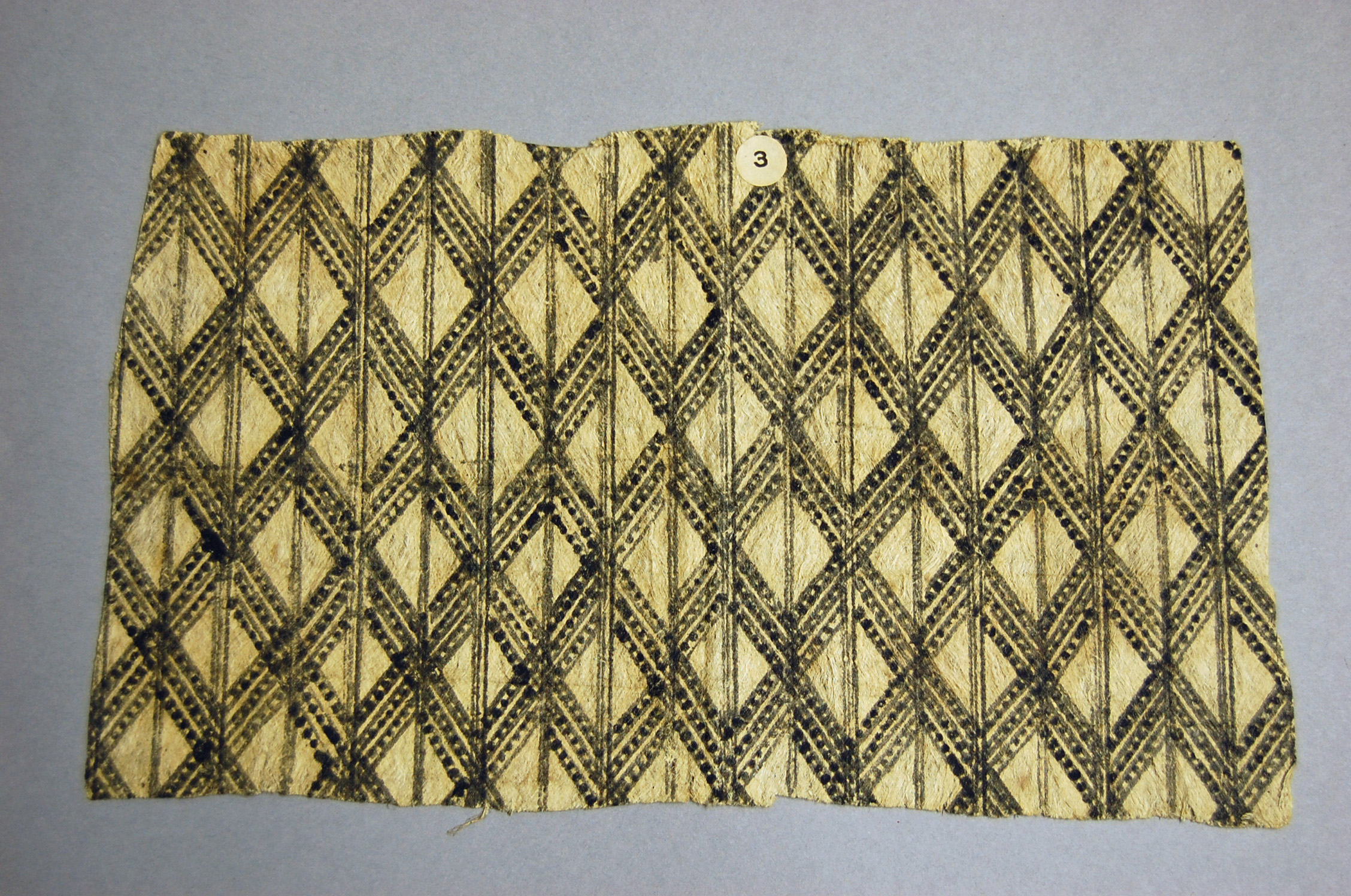




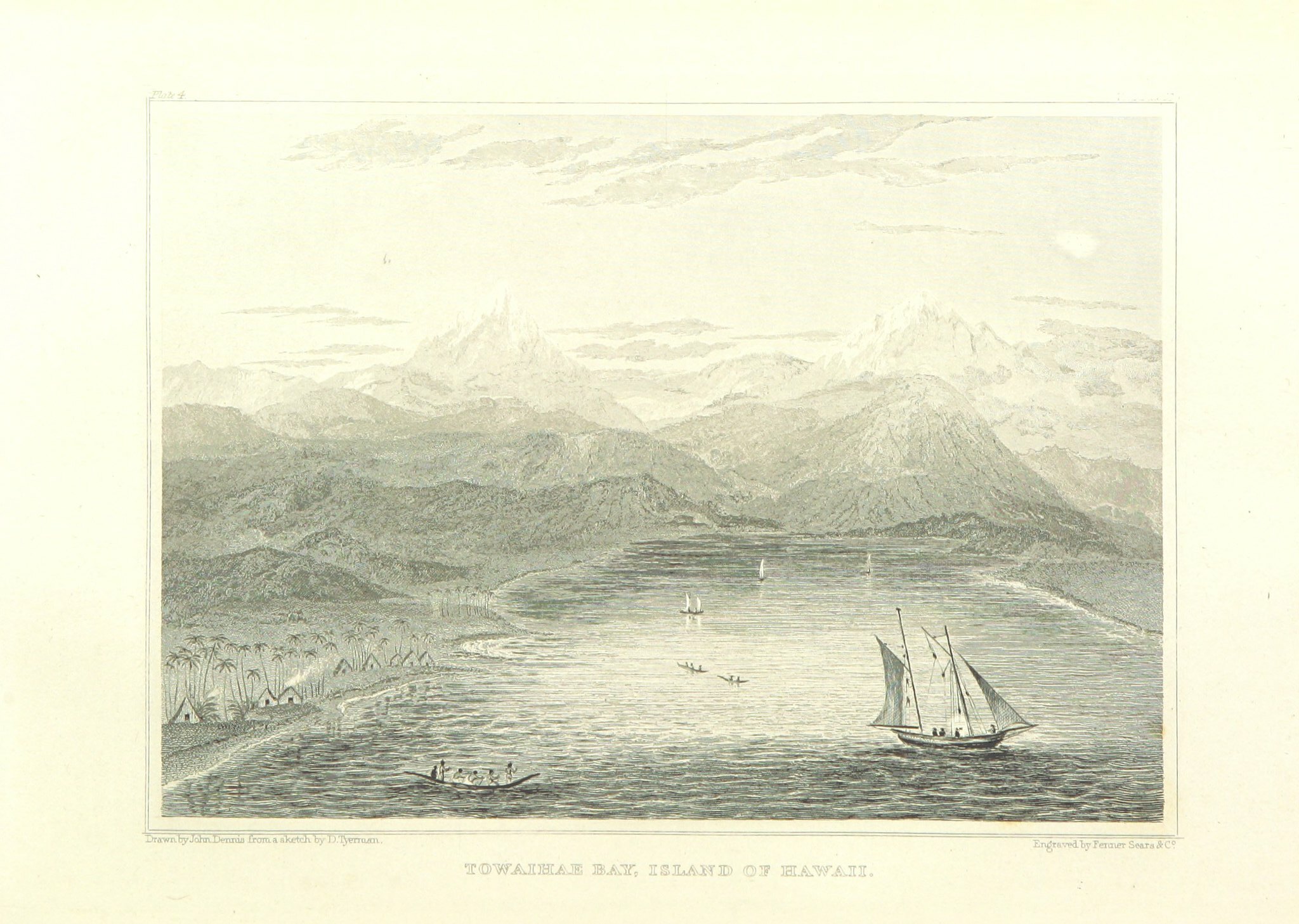
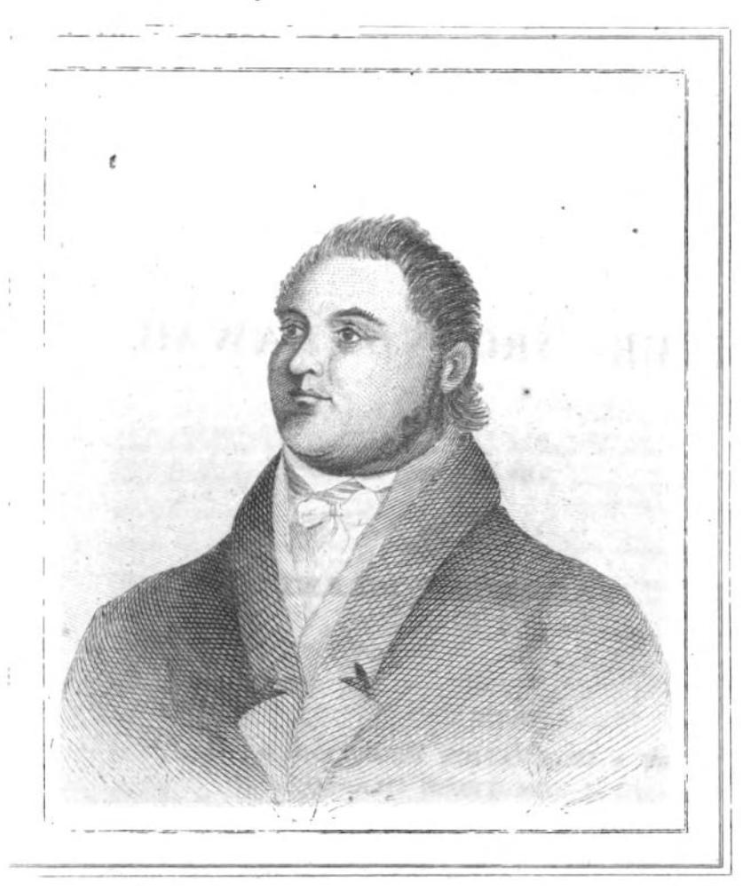
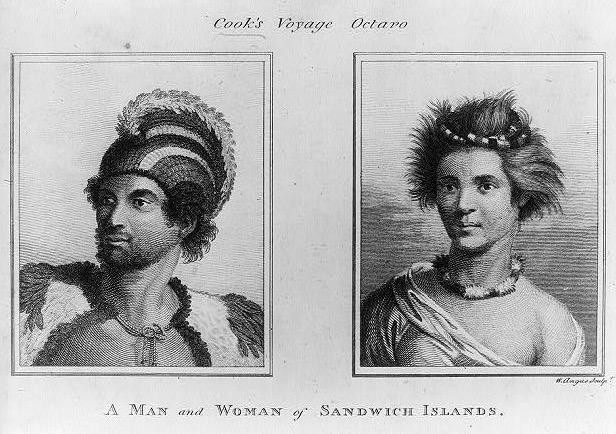



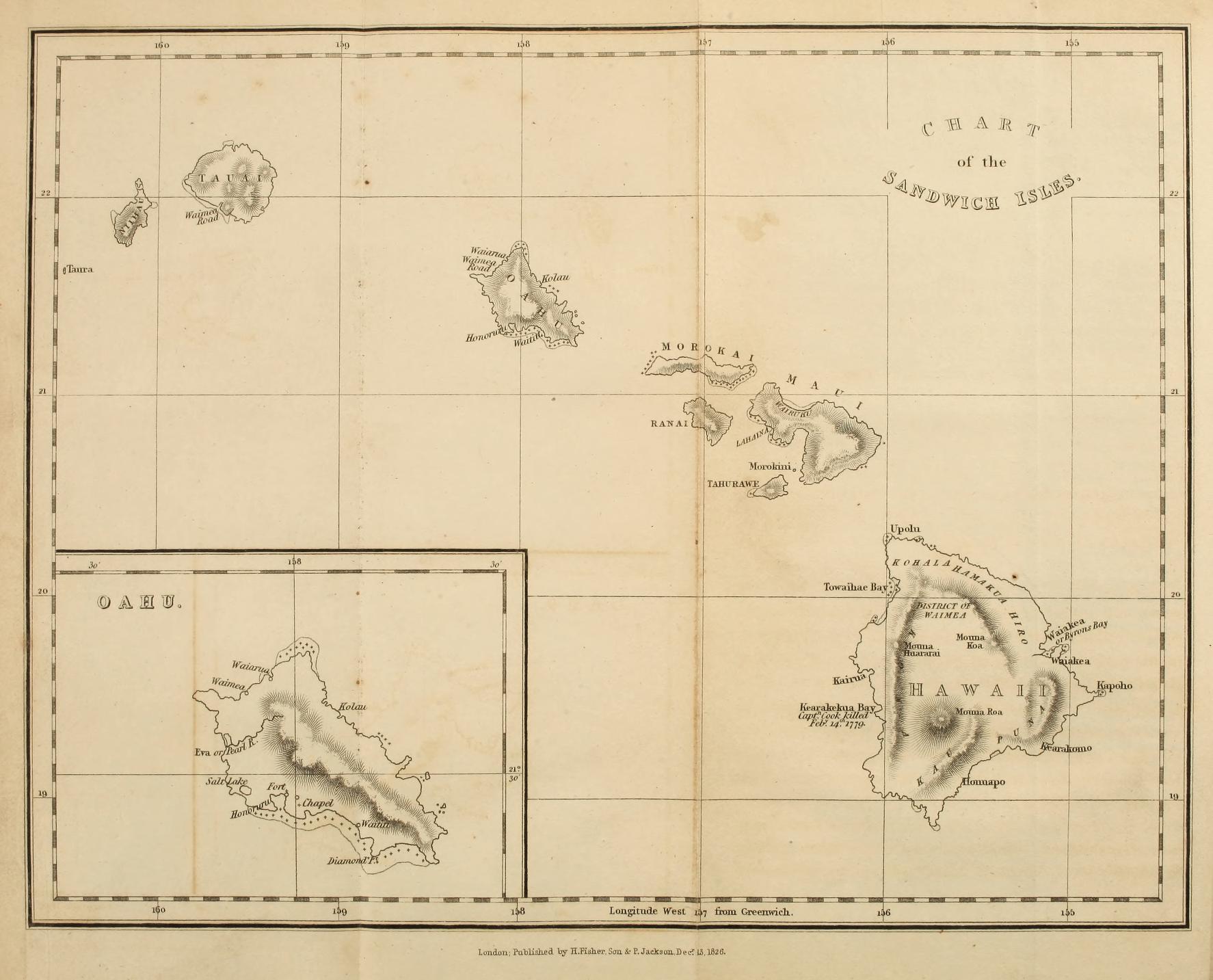
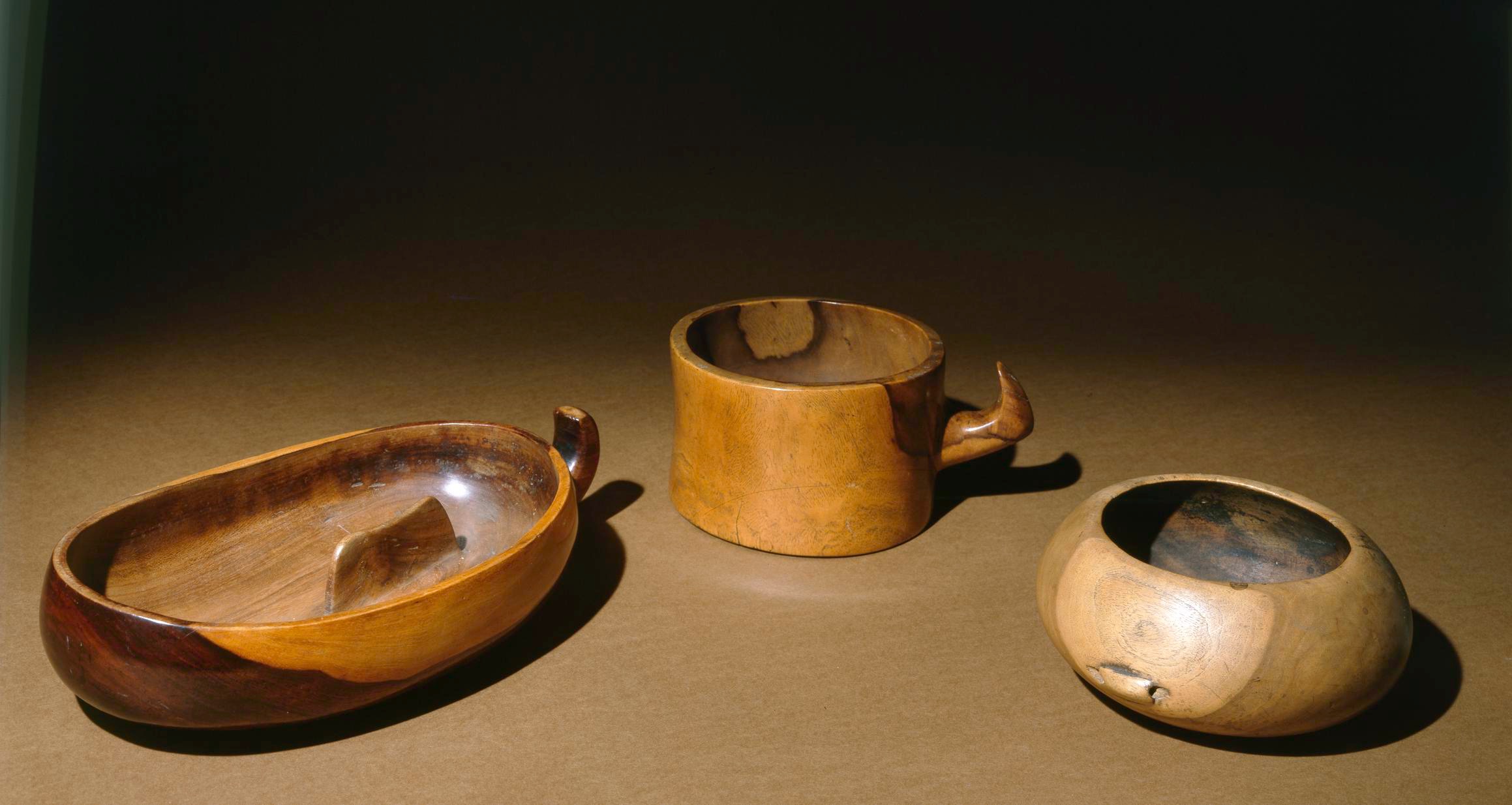
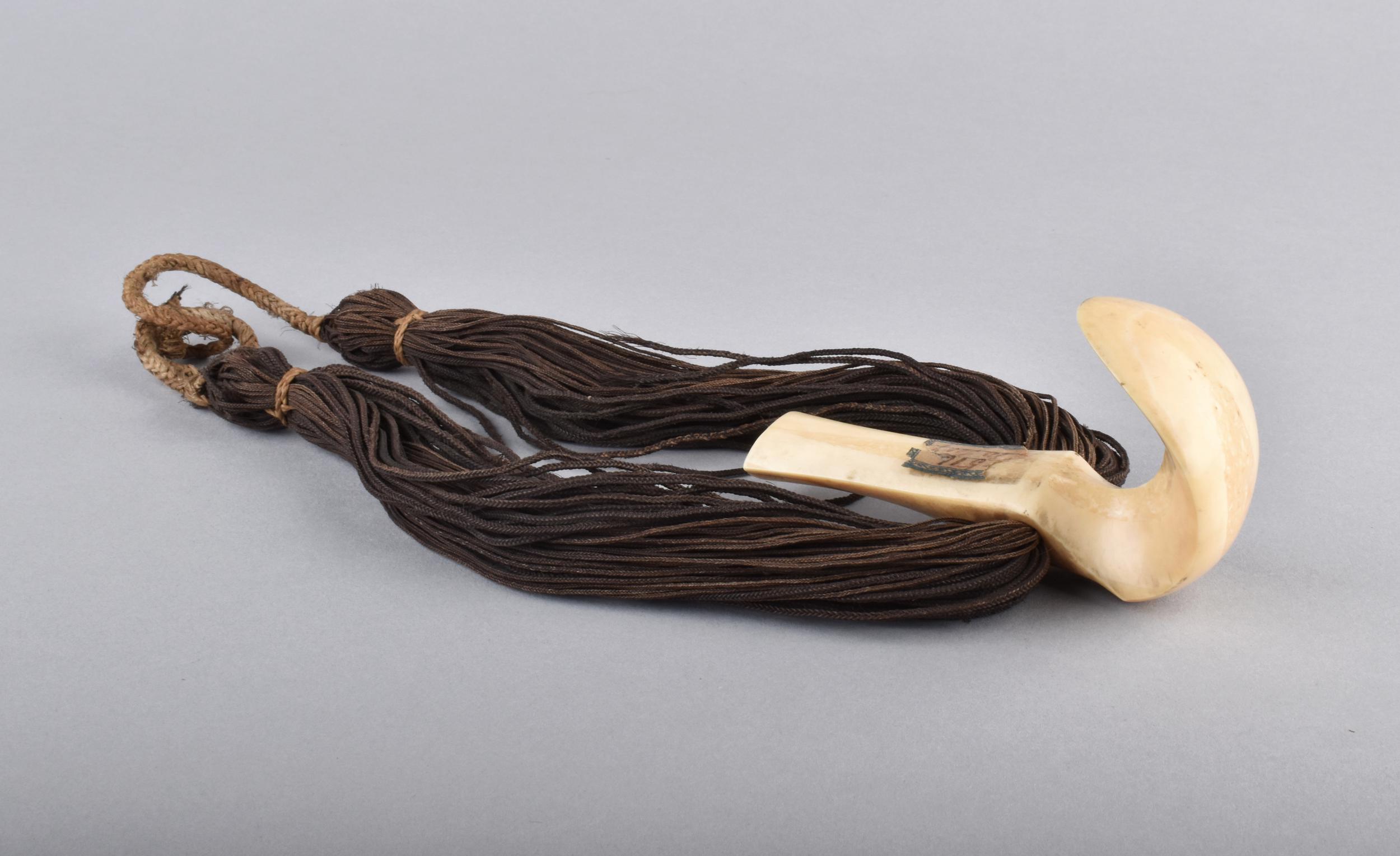





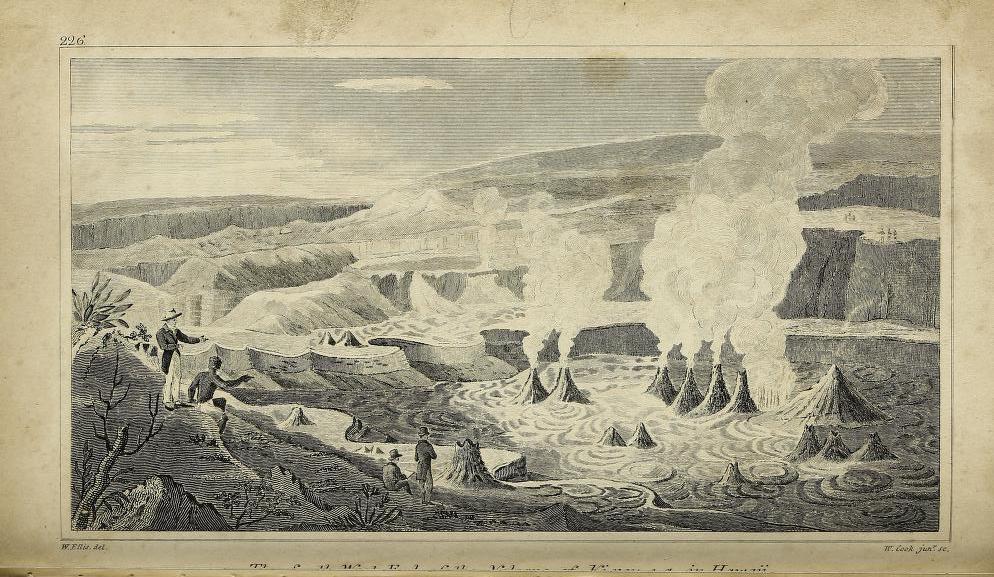


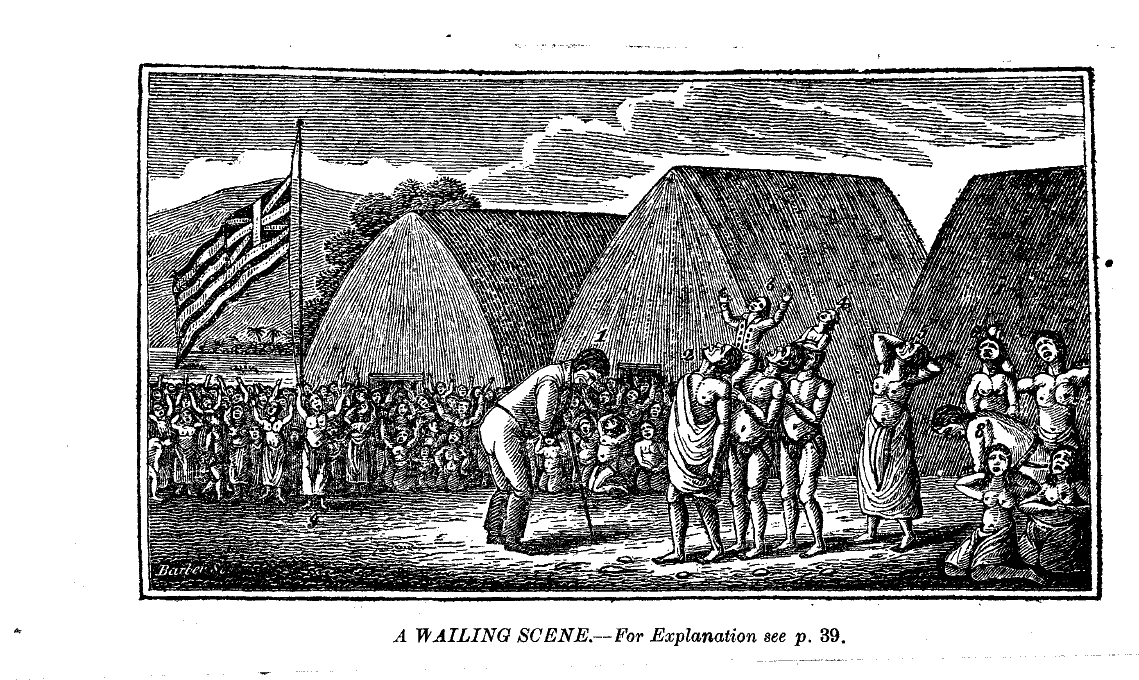

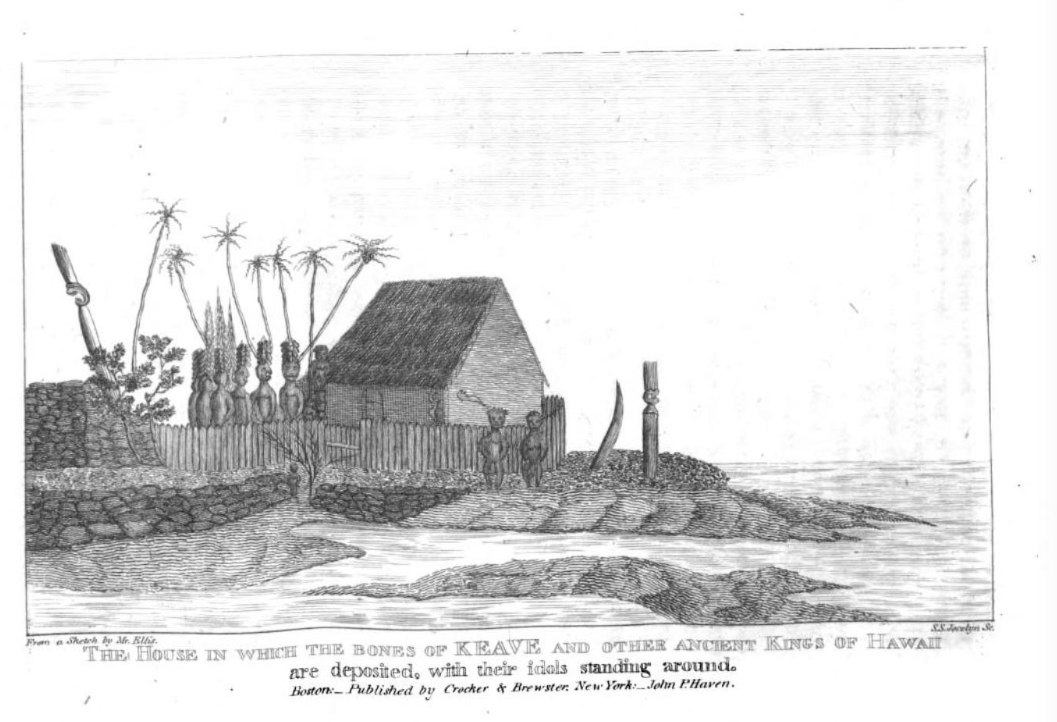



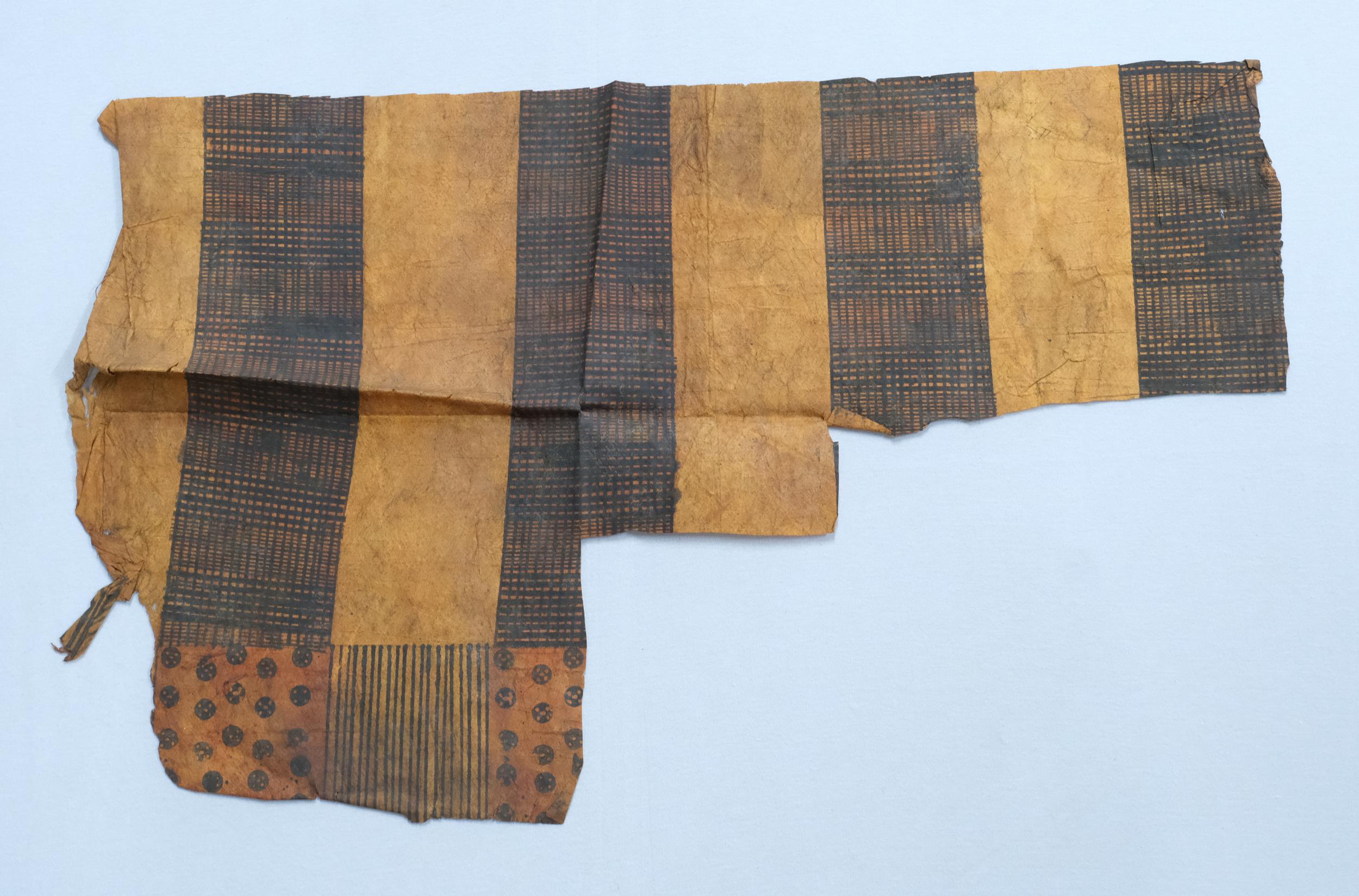
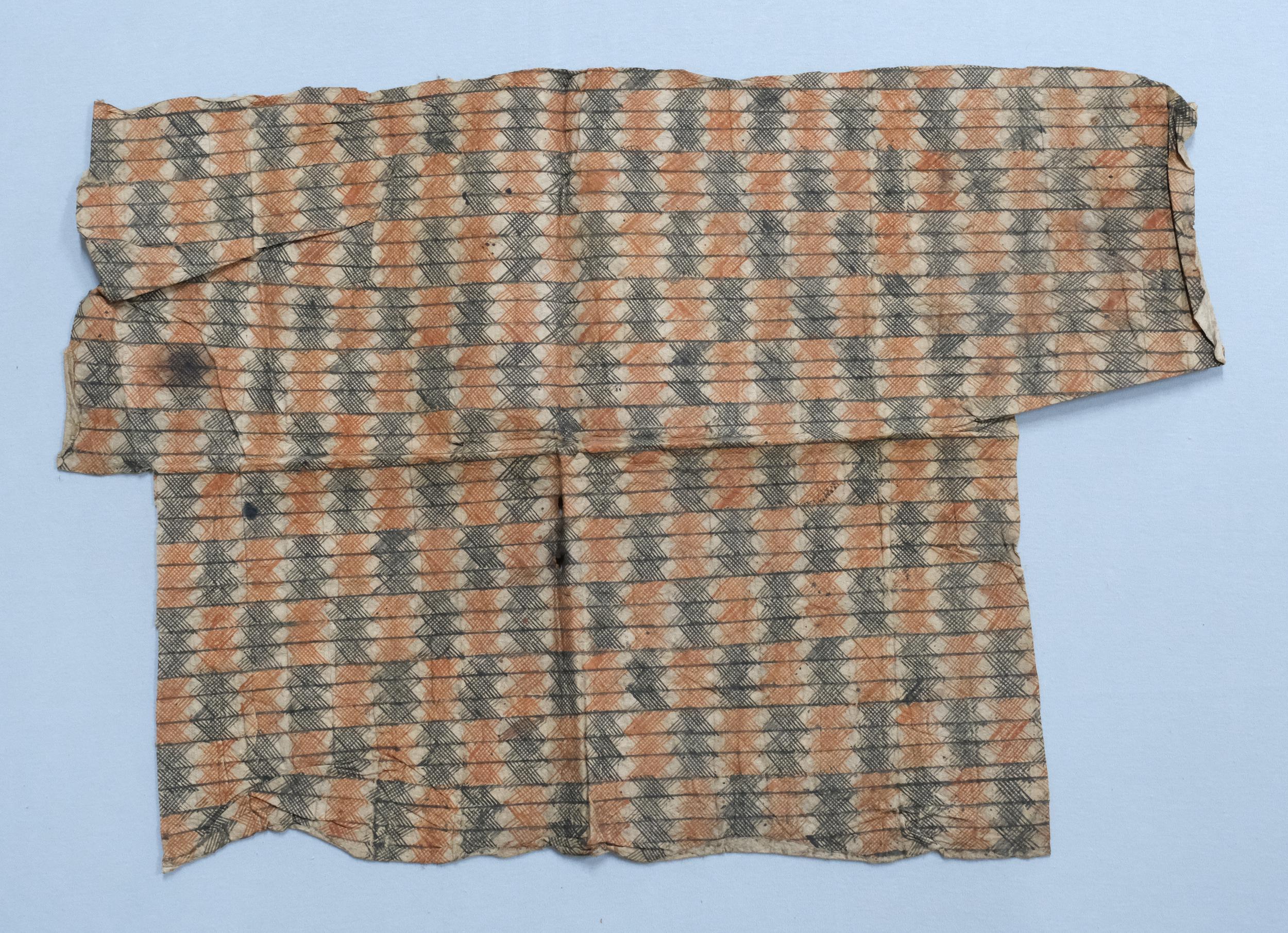

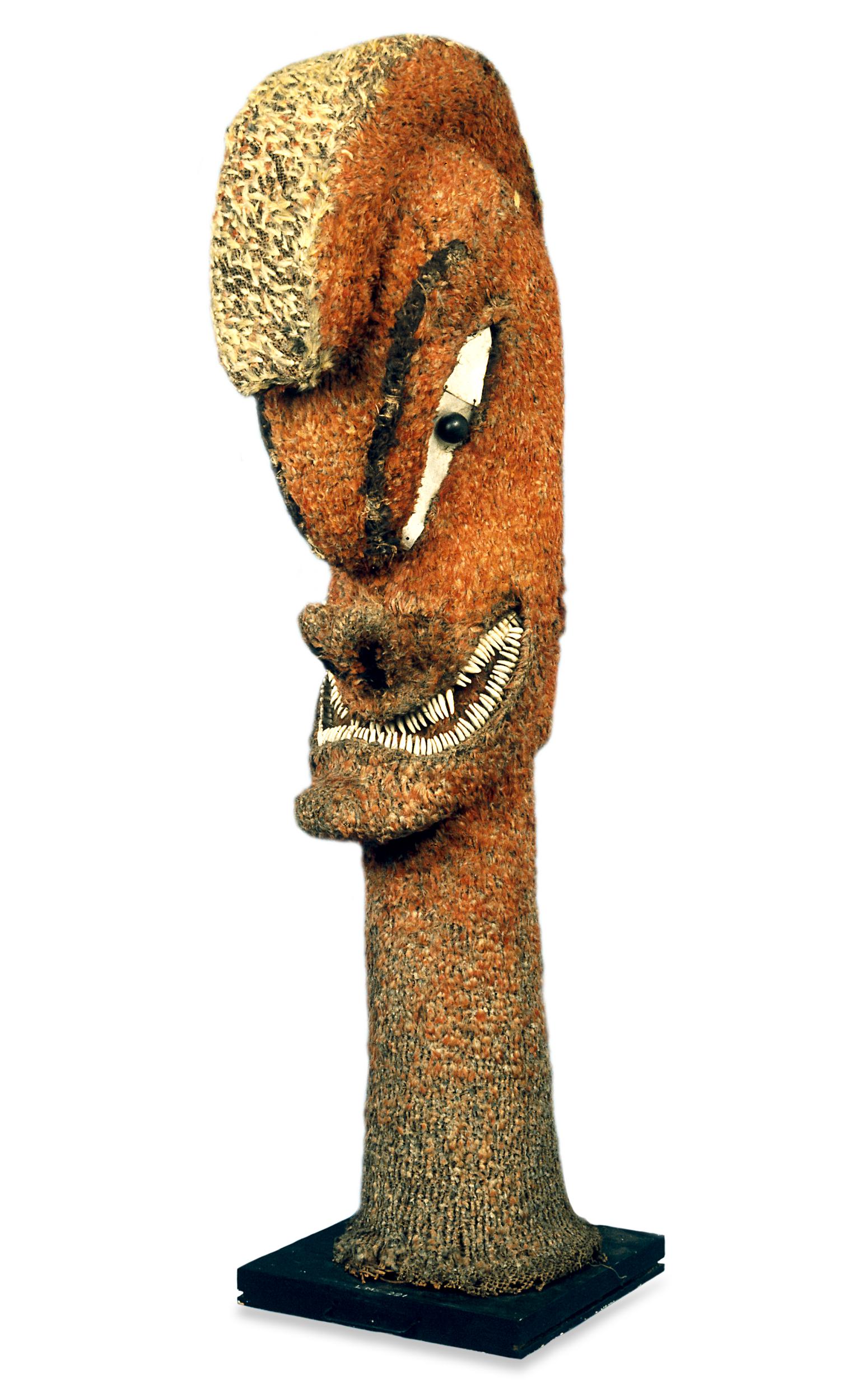
0 Comments